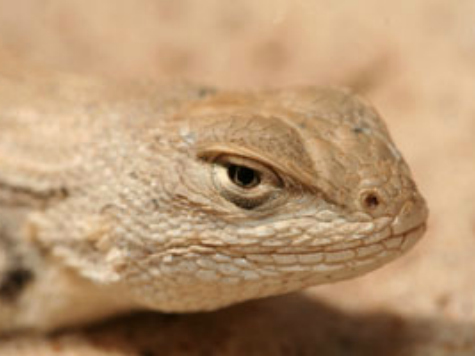“When the Dunes Sagebrush Lizard (DSL) was being considered for listing under the Endangered Species Act (ESA),” Chris Bryan, agency spokesman for the Texas Comptroller, told me, “significant parts of the Texas economy were placed at risk.”
On September 30, District of Columbia District Court Judge Rudolph Contreras ruled against the Center for Biological Diversity (CBD) and the Defenders of Wildlife. The groups brought litigation in the hopes of requiring the Fish and Wildlife Service (FWS) to reverse its 2012 decision not to list the lizard as endangered.
The 2012 decision was the first time that community engagement beat back a proposed ESA listing–a stinging defeat to a movement that has historically used lawsuits as an effective weapon.
In August 2013, Texas Comptroller Susan Combs was granted intervenor status in the case. In October, several regional and national oil and gas associations joined Combs.
The DSL story represents a new chapter in ESA compliance that allows conservation and productive activity to coexist. Previously, presence of an ESA-listed species would shut down activity with harsh consequences for landowners and communities.
The spotted owl stands as the posterbird for bad ESA policy. More than 20 years ago, the spotted owl was listed under the ESA. As a result, much of the logging industry in the Pacific Northwest is gone–leaving thousands unemployed and hundreds of communities decimated. Fifty percent of the nation’s forestry jobs lost from 1990 to 2009 were in just two states: Oregon and Washington. Yet, the listing did not stop the decline of the spotted owl. And, as a result of the listing, forest management in the West changed–leaving thousands of acres overgrown and unhealthy, resulting in the devastating wildfires we see today.
Texas decided to do it differently.
Aware that the Dunes Sagebrush Lizard was an ESA target, conservation efforts started in 2008. Private land in the Permian Basin of West Texas and Southeastern New Mexico–an area that produces 15 percent of U.S. oil and 5 percent of natural gas, as well as a prime ranching and farming region–makes up about half of the DSL habitat. The locals were very worried that if the lizard were listed, the regulations would seriously impact their operations and impose substantial costs.
Stories of individual losses, like the spotted owl’s, prompted the Texas State Legislature to pass a bill creating the Interagency Task Force on Economic Growth and Endangered Species to help municipalities and regional governmental bodies cope with the ESA.
Additionally, the Comptroller’s Office provided funds to survey the lizard’s habitat–which revealed 28 more Texas DSL populations, in addition to the three known populations.
The 2011 surveys were possible because of a special provision the legislature passed in 2011 that allowed DSL population locations to remain confidential. Without the force of state law, landowners resist cooperating in conservation efforts out of fear their property would be rendered unusable.
By being proactive, Texas was able to enact voluntary conservation programs that brought about the 2012 FWS decision not to list the lizard. Addressing the Texas approach, Brian Seasholes, director of the Endangered Species Project at the Reason Foundation, says: “The Texas approach protects landowners from the ESA and the federal government, while finding a balance between economic activity and species conservation.”
Comptroller Combs is elated with the court’s decision, especially considering the pushback she received when she took a risky stand and embarked on the experimental plan to forge an innovative, flexible, and successful conservation plan for the DSL. Responding to the court ruling, Combs said: “It supports our basic belief that the TCP provides appropriate conservation for the lizard and reaffirms that the research conducted by Texas A&M University about the DSL helped to provide Fish and Wildlife the best scientific data available to make the decision not to list the species as endangered.”
New Mexico Congressman Steve Pearce, who spearheaded much of the public education on the potential impacts the DSL listing would have on communities in his district, likewise, welcomes the court’s decision:
It is about time the courts stood up for private landowners over radical environmental groups that continually use sue-and-settle tactics to exploit taxpayer money to pay lawyers and fund themselves instead of recovering species. This decision ensures that sound conservation efforts are carried out in Eastern New Mexico without sacrificing the economic activity that the area depends on. The plan itself is a great example of how cooperative conservation efforts between private industry, state officials, landowners, and the federal government are more than adequate to protect species. This decision differs from the Fish and Wildlife’s listing of the lesser prairie chicken in March that severely hindered a successful cooperative conservation effort. I hope the Fish and Wildlife Service along with the courts continue to allow future efforts like this to succeed.”
Now that Texas’s proactive efforts–such as those engaged to protect the Dunes Sagebrush Lizard–have withstood legal challenge, other states may take similar legislative and conservation actions preventing environmental groups (under the guise of conservation) from using lawsuits to block growth in the United States.
The author of Energy Freedom, Marita Noon serves as the executive director for Energy Makes America Great Inc. and the companion educational organization, the Citizens’ Alliance for Responsible Energy (CARE). She hosts a weekly radio program: America’s Voice for Energy–which expands on the content of her weekly column.
Photo credit: U.S. Fish & Wildlife Service

COMMENTS
Please let us know if you're having issues with commenting.